Time to read:18 minutes
JUMP TO
Table of Contents
The Basics of Stir Fry Seasoning From Scratch
What is stir fry seasoning from scratch?
Stir fry seasoning from scratch refers to a homemade blend of spices and sauces used to flavor stir-fried dishes. Creating your own seasoning allows you to control the ingredients and adjust flavors to your preference.
Why make your own instead of using store-bought?
Crafting your own stir fry seasoning from scratch offers several advantages:
- Customization: Tailor the flavor profile to your liking.
- Healthier Options: Avoid preservatives and additives found in commercial mixes.
- Cost-Effective: Utilize pantry staples, saving money over time.
Ingredients most recipes use and why
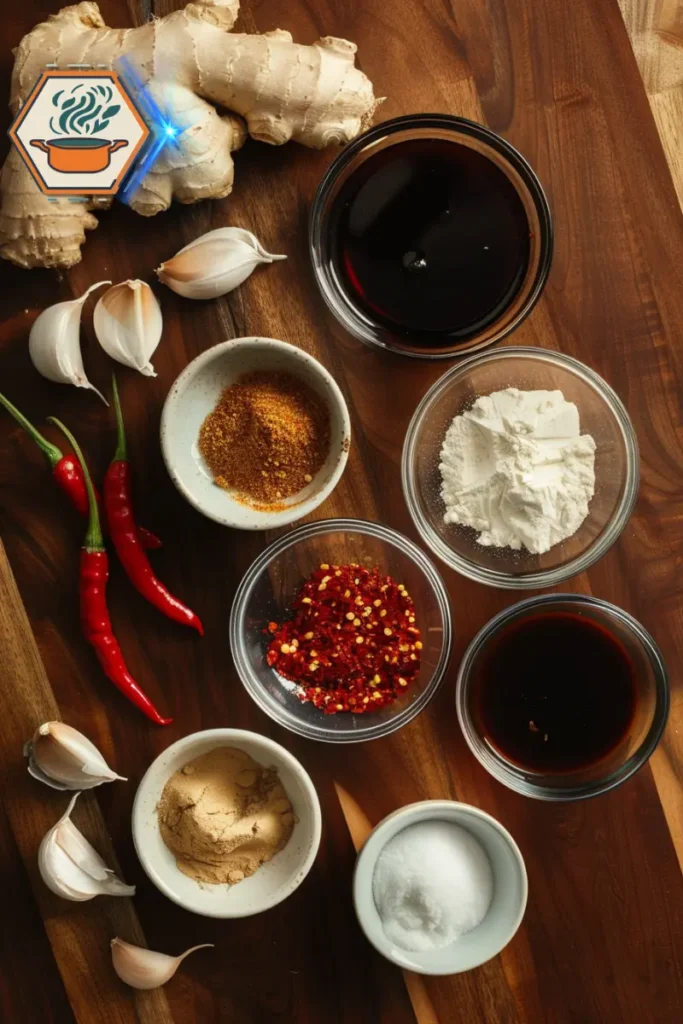
Common ingredients in stir fry seasoning from scratch include:
- Soy Sauce: Provides saltiness and depth.
- Garlic and Ginger: Add aromatic and pungent notes.
- Sugar or Honey: Introduce sweetness to balance flavors.
- Cornstarch: Helps thicken the sauce, ensuring it clings to the ingredients.
- Red Pepper Flakes or Cayenne: Offer a hint of heat.
Pantry staples to stock for homemade spice blends
To prepare stir fry seasoning from scratch, keep these staples on hand:
- Soy Sauce or Tamari
- Sesame Oil
- Rice Vinegar
- Brown Sugar or Honey
- Cornstarch
- Garlic Powder
- Onion Powder
- Ground Ginger
- Red Pepper Flakes
The role of umami, spice, sweetness, and salt
Balancing these elements is crucial in stir fry seasoning from scratch:
- Umami: Achieved through soy sauce, it provides a savory depth.
- Spice: Ingredients like ginger and red pepper flakes add warmth.
- Sweetness: Sugar or honey balances the saltiness and spice.
- Salt: Enhances overall flavor and ties all elements together.
Quick comparison: homemade vs. premade packs
| Aspect | Homemade Seasoning | Store-Bought Packs |
|---|---|---|
| Customization | Fully adjustable to taste | Limited to fixed flavors |
| Ingredients Quality | Control over freshness and quality | May contain preservatives and additives |
| Cost | More economical over time | Generally more expensive per use |
| Health Factors | Can be made with healthier ingredients | Often higher in sodium and sugars |
How to balance flavors for vegetables, meats, tofu
When using stir fry seasoning from scratch, consider:
- Vegetables: Use lighter seasoning to let natural flavors shine.
- Meats: Opt for robust flavors to complement the richness.
- Tofu: Since it’s neutral, it absorbs flavors well; marinate longer for depth.
How to store your seasoning to keep it fresh longer
To maintain freshness:
- Dry Mixes: Store in an airtight container in a cool, dark place.
- Liquid Sauces: Refrigerate in sealed bottles; use within a week for best quality.
Tools that make prep faster (mortar, spice jars, etc.)
Equip your kitchen with:
- Mortar and Pestle: For grinding fresh spices.
- Spice Jars: To organize and store blends.
- Measuring Spoons: Ensure accurate proportions.
- Whisk or Shaker Bottle: For mixing liquid ingredients thoroughly.
For more on enhancing your cooking techniques, explore our guide on caramelizing sugar.
5 Stir Fry Seasoning From Scratch Recipes You’ll Love
Classic Garlic-Ginger Soy Blend for Stir Fries
Stir fry seasoning from scratch makes your meals taste fresh and bold. This classic mix blends garlic and ginger with soy sauce for a warm and savory base. It’s ideal for everyday stir-fries. Using fresh garlic and ground ginger boosts flavor without overpowering the dish.
To prepare it, mix:
- 1 tablespoon soy sauce
- 1 teaspoon ground ginger
- 1 clove minced garlic
- 1/2 teaspoon brown sugar
- A dash of white pepper
This blend works best with chicken or tofu. Try it with noodles or fresh vegetables like bell peppers or snow peas. You can keep this in a sealed jar in the fridge for up to 5 days. It’s an easy go-to if you’re cooking after a long day.
Check out our stir fry seasoning guide for more inspiration and storage tips.
Spicy Chili Lime Seasoning for Stir Fry Kick

A spicy kick works wonders in quick meals. Stir fry seasoning from scratch with chili and lime brings heat and tang. It’s perfect with shrimp, beef, or crispy tofu. Use chili flakes or fresh chili, plus a squeeze of lime for brightness.
For this version, mix:
- 1 teaspoon chili flakes
- 1 tablespoon lime juice
- 1 teaspoon garlic powder
- 1 tablespoon low-sodium soy sauce
- 1/4 teaspoon sugar
This blend suits rice bowls and noodle stir-fries. Adjust the spice level based on your taste. If you enjoy a bolder flavor, double the chili. Add honey for balance if it’s too spicy. A little goes a long way.
This kind of homemade blend is often healthier than bottled sauces, which can be high in sodium or preservatives. You can easily adapt the flavor to suit any protein or vegetable combo.
Sweet & Savory Teriyaki-Style Mix
If you like sweet and salty, this one’s for you. Stir fry seasoning from scratch lets you skip store-bought teriyaki and still get great flavor. Teriyaki-style sauces use soy, sugar, and sometimes ginger or sesame. Making it yourself means no additives.
Here’s a basic version:
- 2 tablespoons soy sauce
- 1 tablespoon brown sugar
- 1/2 teaspoon garlic powder
- 1/2 teaspoon ground ginger
- 1/2 teaspoon rice vinegar
Use it with chicken, carrots, broccoli, or green beans. This mix thickens slightly when heated, coating your ingredients well. Add a few sesame seeds for texture. Serve over white rice or soba noodles.
Pair it with this delicious chicken apple sausage stir fry for a sweet-savory twist that’s both filling and healthy.
For comprehensive guidance on reducing sodium in sauces and choosing healthier alternatives, the American Heart Association offers valuable resources. Their article on healthier condiments provides insights into the sodium content of common sauces like soy sauce and offers recipes for low-sodium substitutes.
Korean BBQ-Inspired Sesame Gochujang Powder
Love Korean BBQ? This stir fry seasoning from scratch brings similar flavor at home. Gochujang, a fermented chili paste, adds a rich umami depth. Paired with sesame and soy, it creates a bold and savory mix.
You’ll need:
- 1 teaspoon gochujang
- 1 tablespoon soy sauce
- 1 teaspoon sesame oil
- 1/2 teaspoon rice vinegar
- 1/2 teaspoon sugar
This blend is best with beef or mushrooms. It goes well with cabbage, bok choy, and scallions too. Stir-fry on high heat to develop the flavor fully. Add sesame seeds at the end for a nutty finish.
This is a great base if you want something different than typical Asian sauces. Gochujang has grown in popularity for a reason—it’s bold, spicy, and flavorful.
Citrusy Lemon-Pepper Asian Fusion
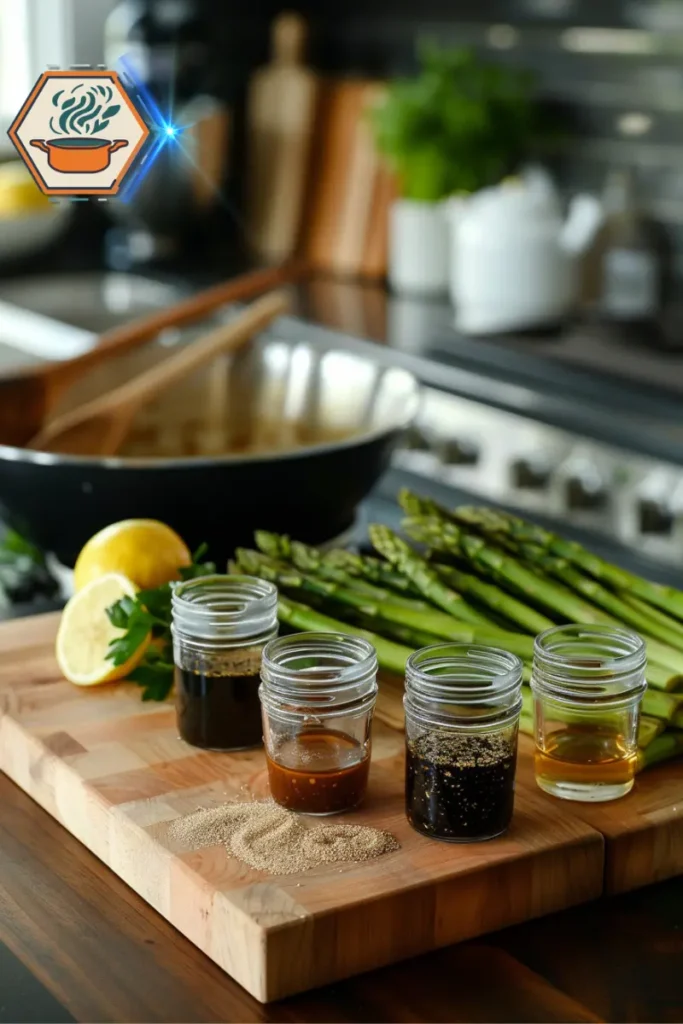
Brighten up your meals with lemon and pepper. Stir fry seasoning from scratch with citrus gives a zesty lift. It pairs well with seafood, like shrimp or white fish, and crisp veggies like asparagus and snap peas.
Try this combo:
- 1 tablespoon lemon juice
- 1/2 teaspoon black pepper
- 1/4 teaspoon garlic powder
- 1/2 tablespoon soy sauce
- 1/4 teaspoon honey
This seasoning is ideal for spring or summer stir-fries. Keep it light and fresh. You can also use lime if lemons aren’t available. Pepper brings heat without overwhelming the flavor. It’s great for a quick 15-minute dinner.
Use it with fish bowls, and don’t forget to try our guide on what sauce goes with salmon to get even more pairing ideas.
How to Adjust Flavors in Homemade Stir Fry Seasonings
Everyone likes their stir fry a little different. When making stir fry seasoning from scratch, balance is key. Here’s how to tweak flavors:
- Too salty? Add a bit of sugar or vinegar.
- Too sweet? Add more soy or a dash of citrus.
- Too spicy? Dilute with a splash of broth or honey.
- Too bland? Try adding garlic, ginger, or a splash of sesame oil.
You can also use natural thickeners like cornstarch for a sauce-like texture. Add 1/2 teaspoon to your mix and stir it in while cooking.
Best Ratios: Teaspoons vs Tablespoons for Meal Prep
Getting your measurements right is important, especially when you prep meals for the week. Below is a simple table you can use to scale your stir fry seasoning from scratch.
| Ingredient | Single Serving | Family Size |
|---|---|---|
| Soy Sauce | 1 tbsp | 3 tbsp |
| Garlic (minced) | 1 clove | 3 cloves |
| Ground Ginger | 1/2 tsp | 1 1/2 tsp |
| Chili Flakes | 1/4 tsp | 1 tsp |
| Sugar or Honey | 1/2 tsp | 1 1/2 tsp |
| Sesame Oil | 1/4 tsp | 1 tsp |
You can mix in bulk and store it in a jar. Label each jar with the blend name. Keep refrigerated for up to 7 days or freeze in cubes for longer storage.
Make-Ahead Stir Fry Mix for Busy Weeknights
Stir fry seasoning from scratch can save your weeknight dinners. Making a few versions ahead of time means you’ll always have flavor ready. Use small mason jars or resealable containers. Pre-mix dry ingredients and add liquids when cooking.
Tips:
- Use meal prep containers
- Label each one with date and ingredients
- Store dry mixes in pantry, liquid ones in fridge
- Shake before use to mix oils and vinegar
This is perfect for families or busy professionals. With your seasonings ready, dinner only takes 10–15 minutes.
Best Pairings for Homemade Stir Fry Seasonings
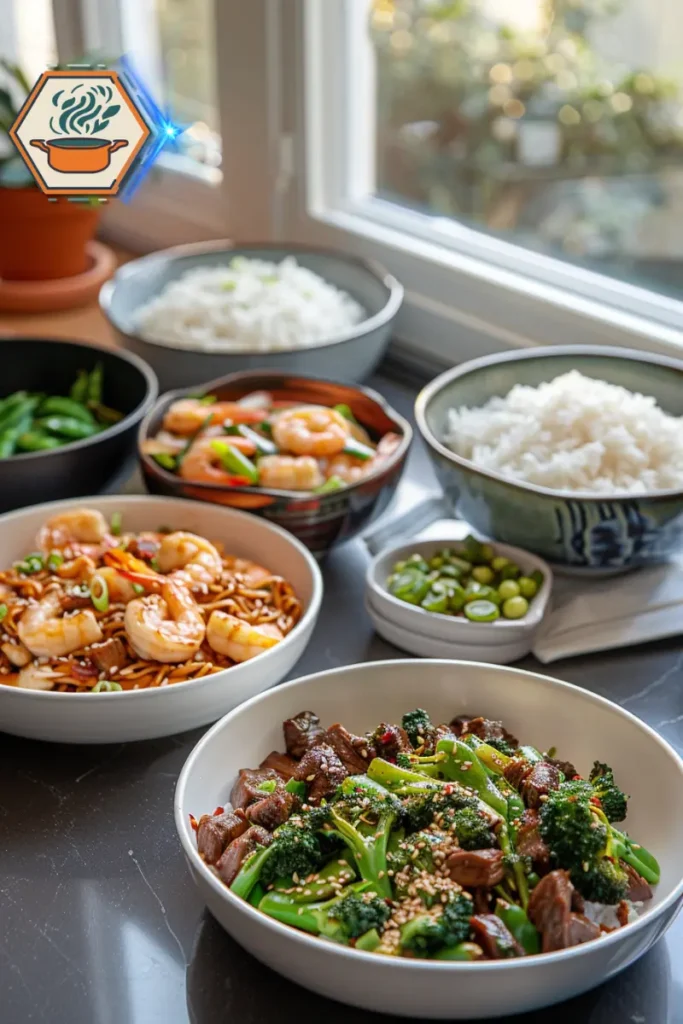
Pairing your stir fry seasoning from scratch with the right ingredients matters. Here’s what works best:
- Vegetables: Bell peppers, broccoli, bok choy, green beans
- Proteins: Chicken, beef, tofu, shrimp
- Grains: White rice, brown rice, soba noodles, udon
- Add-ons: Cashews, sesame seeds, scallions, peanuts
Try the teriyaki-style mix with beef and broccoli or the chili-lime version with shrimp and snap peas. Add steamed rice and you’ve got a complete meal.
You can even pair it with something unexpected like apple pie baked beans for a sweet and savory dinner idea.
Cooking with Stir Fry Seasoning From Scratch
Creating your own stir fry seasoning from scratch allows you to tailor flavors to your preference and ensures the use of fresh, quality ingredients. This approach enhances the taste of your dishes and provides control over the nutritional content, avoiding preservatives often found in store-bought mixes.
How Much Seasoning to Use Per Portion
When preparing a stir fry, the amount of seasoning is crucial for achieving balanced flavors. A general guideline is:
- Protein (e.g., chicken, tofu): Use approximately 1 to 1.5 tablespoons of seasoning per pound.
- Vegetables: Add about 1 tablespoon of seasoning per pound.
Adjust these measurements based on personal taste preferences and the specific ingredients used.
When to Add Dry vs. Wet Ingredients During Cooking
The timing of adding ingredients affects the texture and flavor of your stir fry:
- Heat the Oil: Begin by heating a small amount of oil in your wok or skillet until shimmering.
- Aromatics: Add minced garlic, ginger, or onions, and sauté briefly until fragrant.The Pesky Vegan
- Proteins: Introduce your protein choice, cooking until nearly done.
- Vegetables: Add vegetables that require longer cooking times first, followed by those that cook quickly.Reddit
- Seasoning: Sprinkle your dry seasoning mix over the ingredients, stirring well to ensure even coating.
- Sauces: Pour in any wet ingredients, such as soy sauce or broth, towards the end of cooking to deglaze the pan and create a flavorful sauce.
Stir-Frying Technique Tips: Oil Temperature and Order of Ingredients

Proper technique ensures a successful stir fry:
- Oil Temperature: Use oils with high smoke points, like peanut or canola oil. Heat the oil until it shimmers but doesn’t smoke.
- Ingredient Order: Cook items in batches if necessary to avoid overcrowding, which can lead to steaming rather than frying.
- Continuous Stirring: Keep the ingredients moving to promote even cooking and prevent burning.
Avoiding Soggy Vegetables or Overcooked Proteins
To maintain the desired texture:
- High Heat: Cook over high heat to sear ingredients quickly.
- Batch Cooking: Avoid overcrowding the pan by cooking in batches if needed.
- Uniform Cutting: Cut ingredients into uniform sizes for even cooking.
Vegan and Gluten-Free Tweaks for Each Recipe
Adapting recipes for dietary preferences:
- Vegan: Replace animal proteins with tofu, tempeh, or seitan. Use plant-based sauces and broths.
- Gluten-Free: Opt for tamari or coconut aminos instead of soy sauce. Ensure all components, including seasonings and thickeners, are gluten-free.
Kid-Friendly Seasoning Ideas
To appeal to younger palates:
- Mild Flavors: Use less spicy ingredients and focus on sweet or savory profiles.
- Familiar Tastes: Incorporate flavors children enjoy, like mild garlic or a hint of honey.
Infusing Rice, Noodles, or Wraps with Leftover Blends
Utilize leftover seasoning blends to enhance other components:
- Rice: Stir in seasoning while cooking or sprinkle on top before serving.
- Noodles: Toss cooked noodles with a bit of oil and seasoning for added flavor.
- Wraps: Mix seasoning into fillings or sprinkle over assembled wraps.
Air Fryer or Oven Uses for These Spice Mixes
Your homemade seasoning blends are versatile:
- Air Fryer: Coat vegetables or proteins with a light oil and seasoning mix before air frying for a crispy finish.
- Oven: Use the seasoning as a rub for roasting meats or vegetables, enhancing flavor depth.
Enhancing Frozen Burritos with Homemade Seasoning
Even pre-made items can benefit from your seasoning:
- Before Freezing: Incorporate the seasoning into the filling mixture for consistent flavor.
- After Reheating: Sprinkle a pinch of seasoning on top to refresh flavors.
Quick 15-Minute Stir Fry Meal Plan Using One Base Mix
A streamlined approach for busy schedules:
- Day 1: Chicken and broccoli stir fry over rice.
- Day 2: Tofu and mixed vegetable stir fry with noodles.
- Day 3: Beef and bell pepper stir fry in lettuce wraps.
Prepare a large batch of your base seasoning mix to use throughout the week, saving time and ensuring consistent flavor.
Global Inspiration for Stir Fry Seasoning From Scratch
Creating stir fry seasoning from scratch opens up a world of flavor. You can capture the essence of global cuisines in one dish. In this section, we’ll explore bold, authentic blends. These mixes reflect the spirit of countries like China, Thailand, Japan, India, and more. Each seasoning tells a culinary story. Understanding them can help you season smarter.
Chinese Five-Spice Style Stir Fry Seasoning From Scratch

Stir fry seasoning from scratch often starts with Chinese roots. The famous five-spice blend is a great base. It combines:
- Star anise
- Cloves
- Chinese cinnamon
- Sichuan peppercorns
- Fennel seeds
This aromatic combo adds warm and complex layers. Use it for pork, tofu, or even mushrooms. Toast the spices first for deeper flavor. Then grind them finely. You can add soy sauce and ginger for a complete Chinese stir fry taste.
Thai Basil & Coconut Sugar Blend
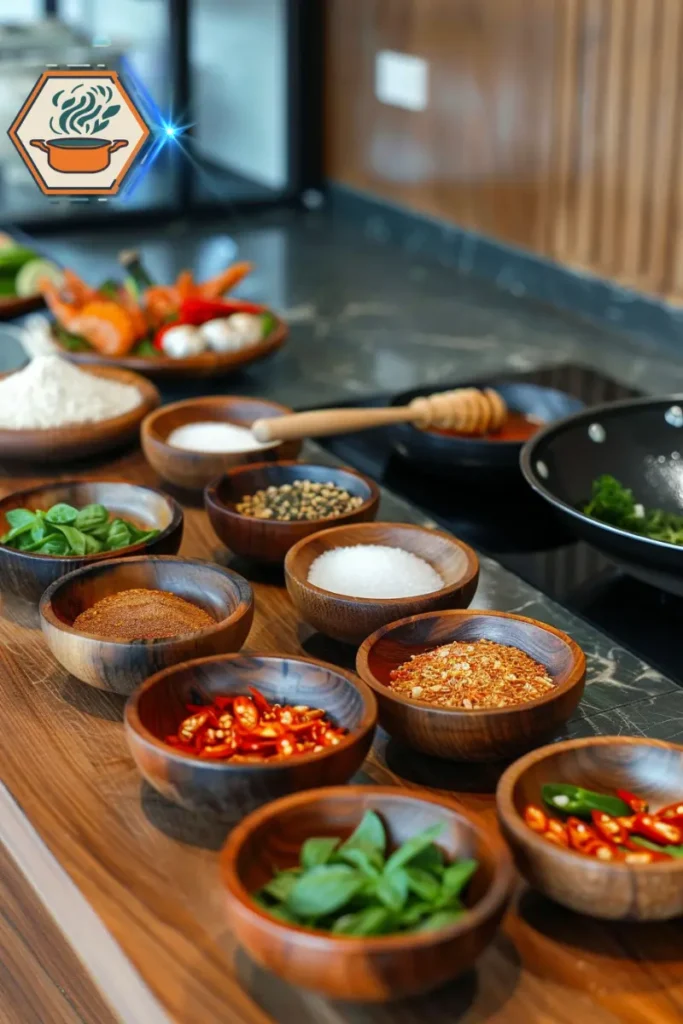
Thai cooking is all about sweet, salty, spicy, and herbal. For a Thai-inspired stir fry seasoning from scratch, try this blend:
- Dried Thai basil
- Coconut sugar
- Crushed red chili
- Garlic powder
- Lime zest
- Sea salt
This mix works beautifully with chicken or shrimp. It’s also excellent for veggie stir fries. You can blend dry ingredients and store them. Add lime juice and fish sauce during cooking to boost the Thai profile.
Related tip: For dishes with a sweet-savory twist, check out this pineapple in baking guide. Fruits work well in Thai-inspired stir fries too.
Japanese Furikake-Inspired Seasoning
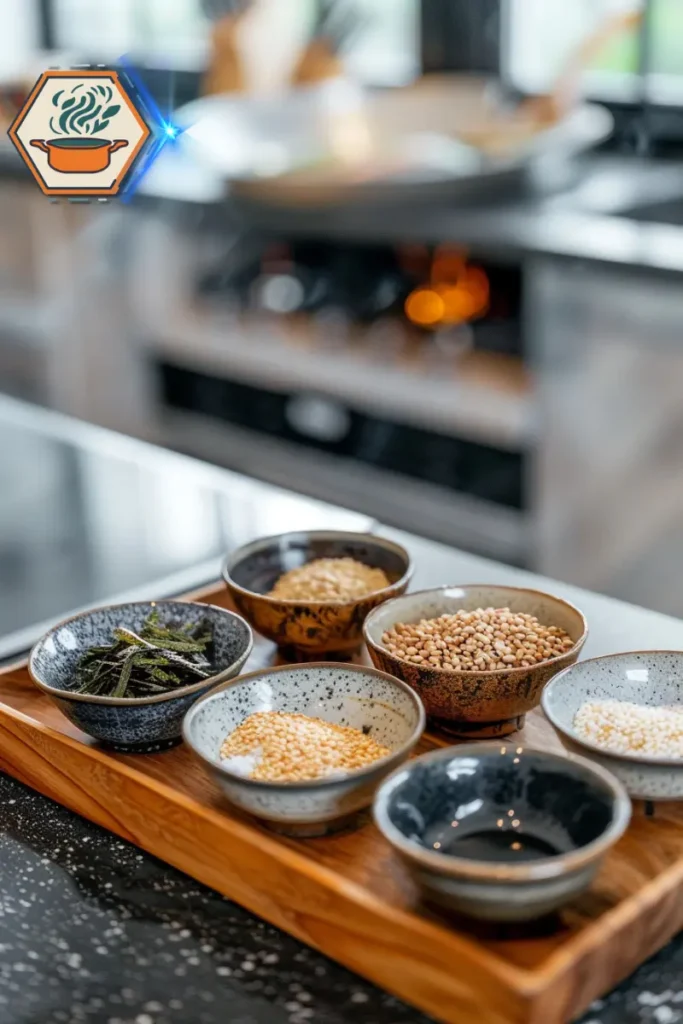
Furikake is a Japanese dry topping, rich in umami. You can make a stir fry version of it easily. Here’s a simple take:
- Nori (seaweed) flakes
- Sesame seeds
- Salt
- Dried miso powder
- Bonito flakes (optional)
This seasoning is excellent for rice-based stir fry dishes. Use it with teriyaki-glazed chicken or tofu. The flavors are mild, nutty, and earthy.
To go even further, mix this with soy sauce and a bit of mirin while cooking. The result is a savory glaze perfect for Japanese-style meals.
Indian-Malay Curry Stir Fry Seasoning
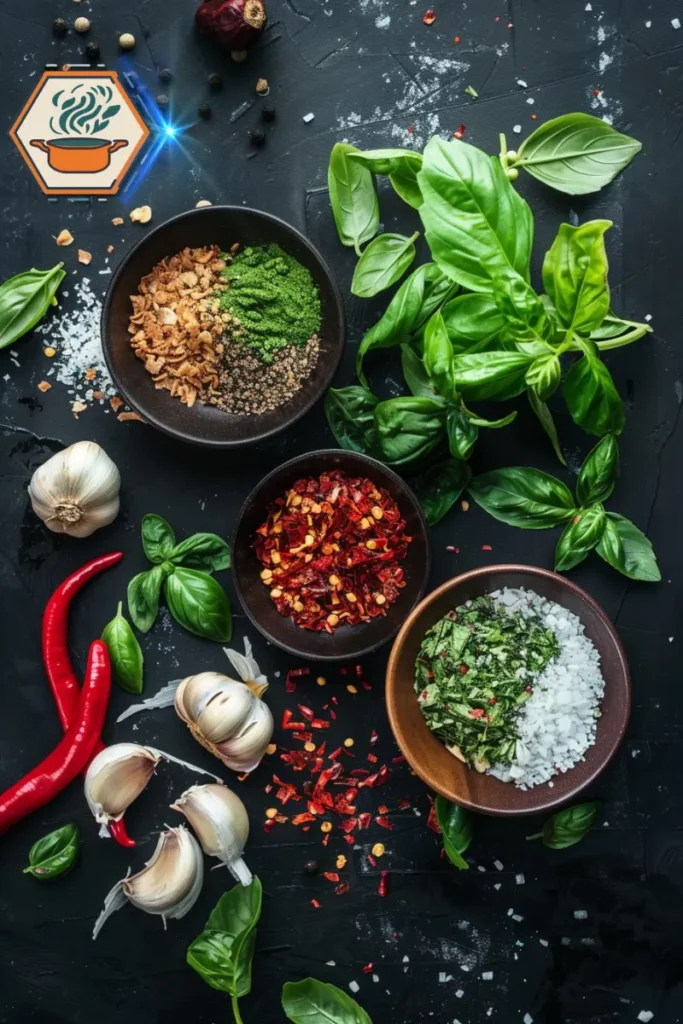
This vibrant blend comes from the fusion of Indian and Malaysian cuisine. Here’s what you need:
- Ground coriander
- Turmeric
- Cumin
- Fenugreek
- Dried curry leaves
- Chili powder
This bold stir fry seasoning from scratch works well with lentils, chickpeas, or beef. Add coconut milk during cooking for a creamy finish. You can also pair it with lime or tamarind for more acidity.
Cooking Tip: Add half the spices during the stir fry and the other half at the end for better layering. For more creamy spice blends, look at our secret to a great meatloaf where seasoning layers make the difference.
Mediterranean Asian Fusion
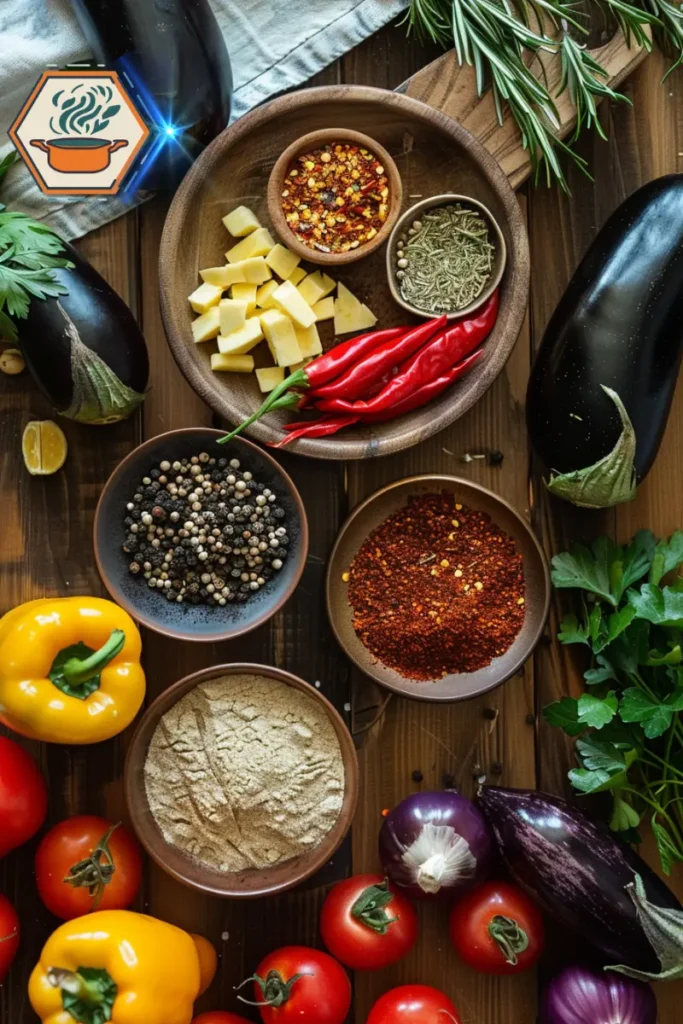
The fusion of Mediterranean and Asian flavors can be truly refreshing. Try this cross-cultural blend:
- Ground cumin
- Lemon peel powder
- Garlic powder
- Crushed rosemary
- Paprika
- Black pepper
This blend suits veggie stir fries and grilled meats. Add olive oil and a splash of soy sauce to bind the spices while cooking. It’s a lighter, aromatic seasoning that fits well with eggplant, bell peppers, and even seafood.
Flavor Layering from Each Cuisine
Understanding how each cuisine builds flavor helps a lot when creating stir fry seasoning from scratch. Here’s how different traditions do it:
| Cuisine | Primary Flavor | Supporting Notes | Best Use |
|---|---|---|---|
| Chinese | Umami | Sweet, spicy, smoky | Pork, tofu, mushrooms |
| Thai | Sweet-Spicy | Herbal, citrus | Chicken, shrimp |
| Japanese | Umami | Nutty, mild | Rice, tofu |
| Indian-Malay | Spiced | Earthy, warm | Legumes, beef, coconut |
| Mediterranean | Bright | Herbal, acidic | Vegetables, seafood |
Layering spices in stages enhances depth. Try blooming spices in oil first, then adjust seasoning as you go.
Match Your Seasoning to the Dish
You don’t need to use the same seasoning for every dish. Match it to the protein and base:
- Rice: Add garlic and soy-heavy blends
- Noodles: Use citrus, spice, and nutty flavors
- Tofu or tempeh: Go bold with Indian or Thai seasonings
- Vegetables: Lighter blends work best like Mediterranean mix
Hybrid Seasoning Tricks
Want to try something fun? Mix and match to create your own twist:
- Chinese five-spice + lime zest + coconut sugar
- Curry spice mix + sesame seeds
- Furikake + lemon + cumin
These combos bring different worlds together. Try small amounts first. Balance heat, sweetness, and salt. If something’s too strong, add a pinch of brown sugar or a splash of acid like lemon or vinegar.
For example, combining the Thai basil blend with a bit of curry powder gives a beautiful herb-spice mix. Great for chicken or tofu stir fries.
Reader-Inspired Twist: Peanut Butter & Chili Oil
One of our readers shared a unique twist. She adds:
- 1 tsp peanut butter
- A drizzle of chili oil
- Dash of garlic powder
- Soy sauce
Mix it into your veggies right at the end. The peanut adds creaminess, while chili oil brings heat. This blend works well with broccoli, bell peppers, and soba noodles.
Pro tip: Add chopped peanuts for a crunchy finish. This combo also works with rice noodles and shredded cabbage.
Sample Blend Recipes for Your Pantry
Here’s a quick cheat sheet to keep in your kitchen:
| Style | Dry Blend Ingredients | Best Pairing |
|---|---|---|
| Chinese Five-Spice | Star anise, cloves, cinnamon, fennel, peppercorns | Pork, mushrooms, tofu |
| Thai Herb Blend | Thai basil, coconut sugar, chili flakes, lime zest | Shrimp, bell peppers, rice |
| Japanese Furikake | Nori flakes, sesame seeds, salt, miso powder | Tofu, rice, teriyaki chicken |
| Curry Mix | Turmeric, cumin, fenugreek, curry leaves, chili powder | Lentils, chickpeas, coconut |
| Mediterranean Mix | Cumin, lemon peel, garlic, rosemary, paprika | Eggplant, zucchini, seafood |
These blends can be stored in airtight jars for weeks. Label them and add best-by dates for freshness.
For deeper insight on citrus-based stir fries, see this related article on lemon pepper pasta for balance ideas.
Print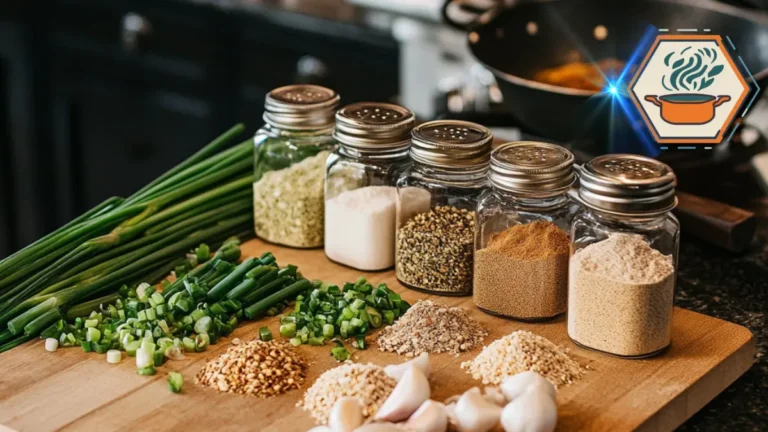
Stir Fry Seasoning from Scratch
Elevate your weeknight dinners with this easy, flavorful stir fry seasoning from scratch. Customize your blend, control ingredients, and create better-than-takeout stir fries every time.
- Total Time: 5 minutes
- Yield: 1 Serving
Ingredients
1 tbsp soy sauce
1 tsp ground ginger
1 clove garlic, minced
½ tsp brown sugar
Dash of white pepper
Instructions
In a bowl, combine soy sauce, ginger, garlic, brown sugar, and pepper.
Stir well until sugar is dissolved.
Use immediately in stir fry or store in an airtight jar for up to 5 days in the fridge.
Add during the final 2 minutes of stir frying for best flavor.
Notes
You can double or triple this blend and refrigerate it for later.
Great with chicken, tofu, or mixed vegetables.
Add ½ tsp cornstarch if you want a thicker stir fry sauce.
- Prep Time: 5 minutes
- Cook Time: 0 minutes
- Category: Spice Blend
- Method: Mixing
- Cuisine: Asian / Fusion
- Diet: Vegan
FAQS
What is stir fry seasoning from scratch?
It’s a homemade blend of spices and sauces, allowing full control over flavor, freshness, and healthiness. Making your own stir fry seasoning from scratch ensures no preservatives and allows custom adjustments to taste.
How long can I store stir fry seasoning from scratch?
Dry seasoning mixes can be stored in airtight jars for 1–2 months. Liquid mixes last up to a week in the fridge. You can also freeze in ice cube trays for longer shelf life.
What’s the best way to use stir fry seasoning from scratch?
Add dry mixes while sautéing aromatics, and pour in wet ingredients toward the end of cooking. Use about 1–1.5 tbsp per pound of protein or veggies.
Is stir fry seasoning from scratch healthier than store-bought?
Yes, because you control sodium, sugar, and avoid additives. Many store-bought options are high in salt or preservatives.
Can I make stir fry seasoning from scratch vegan or gluten-free?
Absolutely! Use tamari or coconut aminos for gluten-free and stick with plant-based components like tofu or tempeh.
Can I use stir fry seasoning from scratch in the air fryer?
Yes! Coat veggies or proteins lightly with oil and seasoning before air frying. It enhances crispness and flavor.

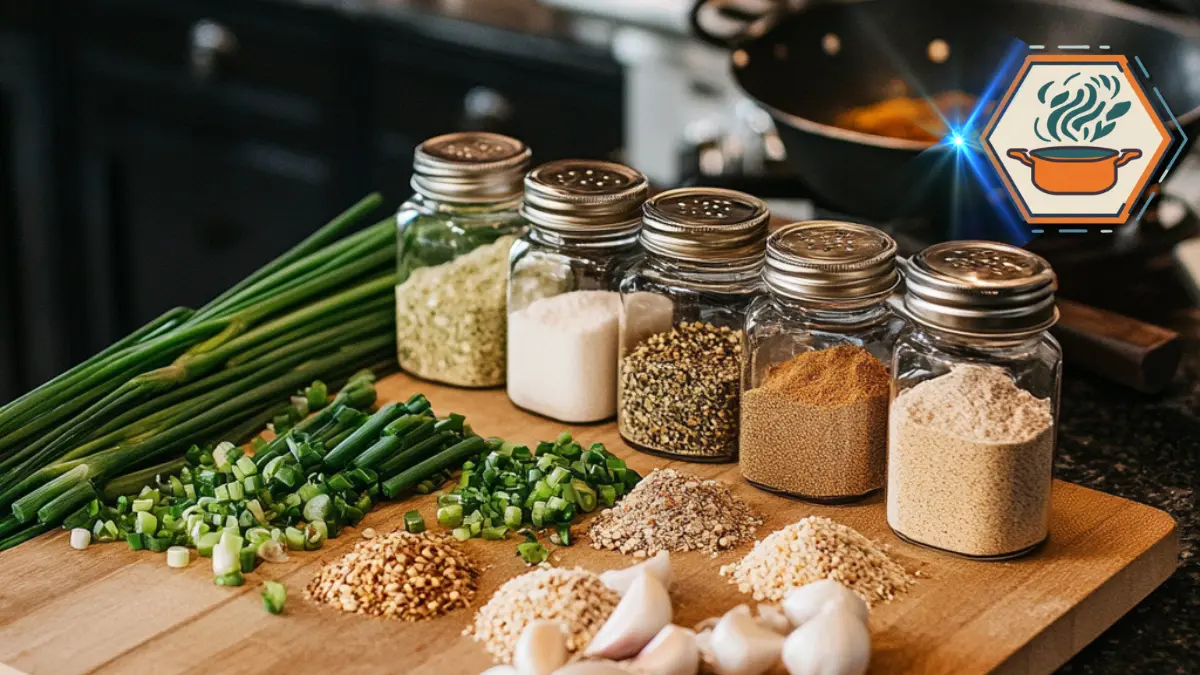
Woah! I’m really enjoying the template/theme of this blog.
It’s simple, yet effective. A lot of times it’s challenging to get that “perfect balance” between usability
and visual appearance. I must say you’ve done a awesome job with this.
In addition, the blog loads extremely quick
for me on Firefox. Excellent Blog!
This article is a perfect blend of facts and practical advice.
Great site!